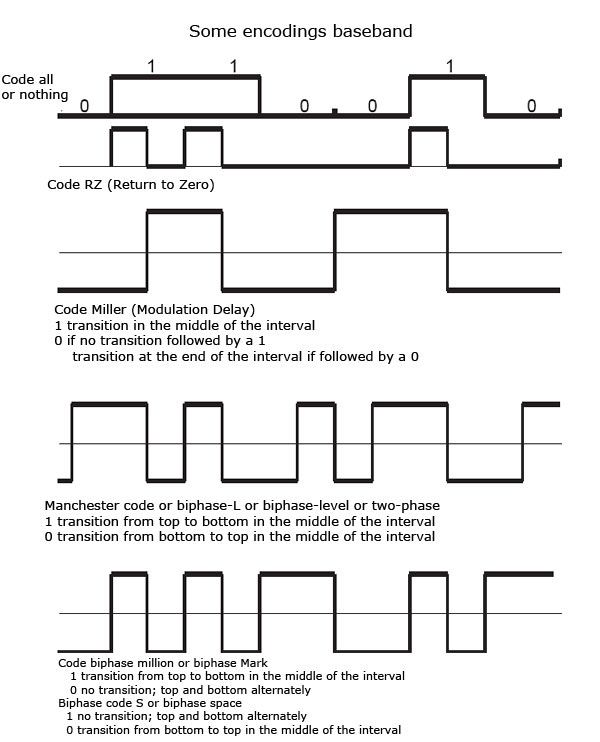Let us examine the transmission technique that is to say how a transmitter can send a signal that the receiver will recognize as a 1 or a 0.
A communications medium over which signals are sent with no shifting of their frequency, so that only one signal can be carried at a time: the original ETHERNET and the ANALOGUE public phone system are both baseband media. The alternative is to alter the frequency and phase of signals to permit many to share one channel.
The simplest method is to transmit on the line of the various currents, a current zero indicating a 0 and a positive current 1 is obtained in this way a representation of the bits of the character to be transmitted in the form of slots as shown in FIG.
This method is called transmission baseband. The exact implementation of these slots is complex, because it is often difficult to get direct current between two stations. The same difficulty is found in the coding NRZ (Non Return to Zero), also shown in Fig. Bipolar encoding is a coding all-or-nothing, in which bit 1 is indicated by a positive or negative current in turn, to avoid direct currents. This code lets bit 0 defined by a zero current.

The high density bipolar coding lets not let the zero current during the aftermath of 0. Special filling suites (negative current, zero or positive) are then inserted in place of these zeros. A new one is indicated by a positive or negative current in violation with the filling on.
Many other baseband encodings have been developed to suit the demand to improve certain characteristics of the signal. The figure shows the coding RZ (Return to Zero), Miller, Manchester and Biphase-M and S.
The rapid degradation of signals as the distance is the main problem of the transmission baseband. If the signal is not regenerated often, it takes any form; the receiver is unable to understand. This method of transmission can not be used for short distances, less than 5 km away. Over longer distances, using a sinusoidal signal. This type of signal, even weak, may very well be decoded by the receiver.

 Dinesh Thakur holds an B.C.A, MCDBA, MCSD certifications. Dinesh authors the hugely popular
Dinesh Thakur holds an B.C.A, MCDBA, MCSD certifications. Dinesh authors the hugely popular